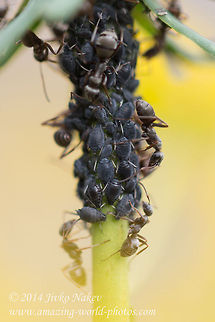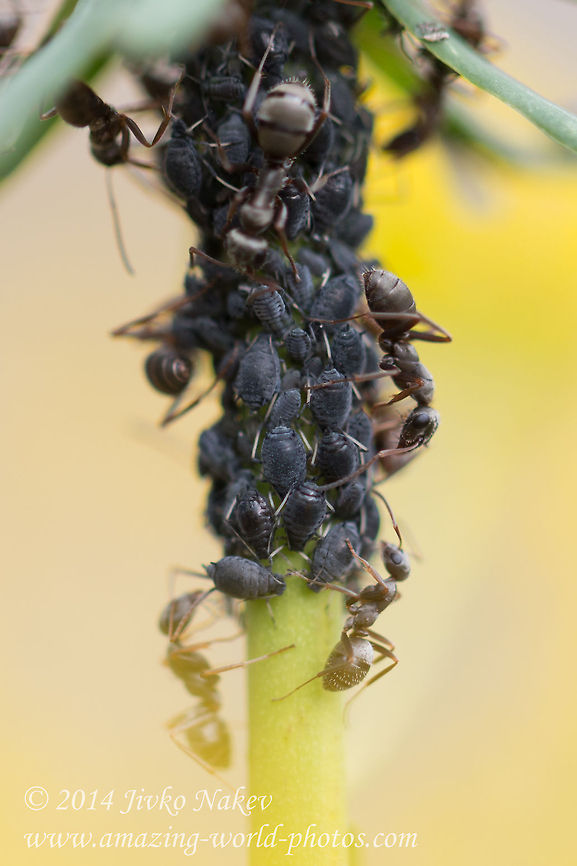
Aphis euphorbiae is an aphid, one of 400 species in the Aphis genus. Many are considered agricultural pests, and known for their close relationship with ants.
Similar species: True Bugs
By Jivko Nakev
All rights reserved
Uploaded May 22, 2014. Captured May 8, 2014 15:13 in 82, 2013 Shiroki dol, Bulgaria.


comments (4)
"The group to which they these aphids belong (Aphis spp. on Euphorbia) are described by Blackman as 'taxonomically difficult'. See http://www.aphidsonworldsplants.info/d_APHIDS_A.htm#Aphis
Nevertheless, I think it is likely your aphids are Aphis euphorbiae (or just possibly Aphis pseudopaludicola).
Blackman's description of Aphis euphorbiae is as follows:
"Apterae are blackish brown, shiny or wax-dusted, with tibiae pale brown except at apices, and siphunculi and cauda black; body length1.3-2.4 mm; siphunculi 0.70-1.37 × cauda. Dorsal abdomen with sclerotic shield usually confined to central area, not
extending laterally as far as intersegmental or marginal sclerites. Cauda elongate triangular or finger-shaped, more than 1.3 × its basal width. Siphunculi rather robust, often with slightly convex sides. On upper parts of stems of Euphorbia spp., especially Euphorbia cyparissia."
The shiny sclerotic shield on the central part of the dorsum, and the rather robust siphunculi are very clear in your specimens.
We cannot however rule out Aphis pseudopaludicola. This aphid species has been recorded on the stem, petioles and undersides of leaves of Euphorbia cyparissias in Bulgaria. Aphis pseudopaludicola only differs from Aphis euphorbiae by having the hairs on the third antennal segment finely pointed, and measuring 1.1-2.0 × the basal diameter of the third antennal segment. So you would need a microscope to distinguish these two species!"
Than I took few specimen at home and investigated them with 20x magnifier and would say these are Aphis euphorbiae.
Posted 11 years ago
http://influentialpoints.com/Gallery/Aphid_genera.htm
I'll tell him. Posted 11 years ago, modified 11 years ago